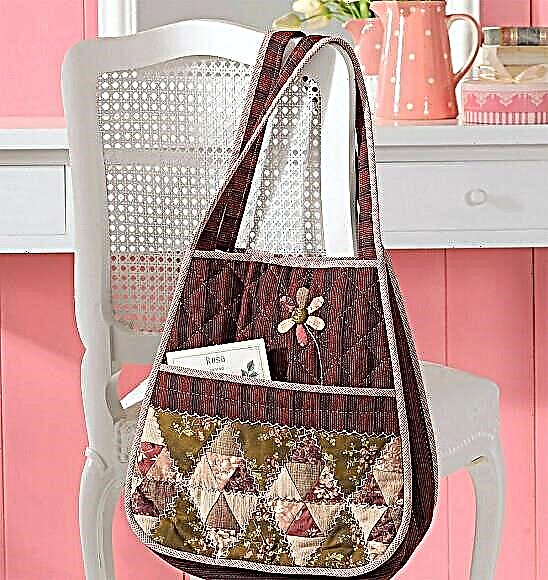Share
Pin
Tweet
Send
Share
Send
This product, although it consists of many shreds and seams, is light as a feather. Passing through the delicate colors and patterns of fabrics, the light gives the room a pleasant warmth to the eye.
You will need
Fabrics made of 100% cotton 112-114 cm wideFabric A: 12-25 cm in at least 6 fabrics with various pale white-blue and lilac-white delicate floral patterns, 1 or 2 fabrics per cell
Fabric B: 12-25 cm in different fabrics with a printed pattern matched to the tone, light and medium blue-green, lavender, gray, melon yellow and delicate red shades
Fabric C: 50 cm, natural cotton, coffee with milk or similar fabric with a very pale peach hue
Fabric D: 50 cm in cotton and ecru or various fabrics in a very light gray shade
Ecru sewing thread
The diagram (photo 4) shows how the fabrics are distributed: fabric, A - blue, B - purple, C - white, B - beige.
About patchwork
The charm of this curtain is approx. 90 x 128 cm consists in the fact that daylight passes through it and illuminates the room as if through a huge colored lampshade. This piece of patchwork has no padding or lining, in addition to this, the seam allowances are not swept and form a delicate fringe over time.To emphasize the originality of this product, choose fabrics of very restrained and delicate shades for it.Cut
For starters, of course, have to work hard. From fabrics A and B according to the pattern, cut out 102 squares with a length of 7.5 cm + 5 mm of allowances for the seams on all sides. Then cut another 102 rectangles from fabrics C and B, without a template, by hand, their sizes should vary from 4.5 to 5 cm for each side.Start blocks
Sew a small square of fabric With the wrong side down on the face in the center of a square cut out of a pattern from fabric A. Do not tuck up the cuts of the upper square. The stitching seam does not have to be as straight as a string. Sew ecru threads. Between sections and the seam of the upper square should remain approx. 6 mm.In the same way, process all 102 blocks of fabrics A and C, then repeat the process for blocks of fabrics B and D. Carefully iron all the blocks. Now carefully cut the fabric of the lower square under the small rectangle stitched on top, not reaching the seam of approx. 6 mm.
To start blocks from shreds
Fold the blocks in 17 rows of 12 blocks (see photo diagrams). Alternate the squares of fabrics, A and fabrics B. Now stitch the blocks sequentially in a row. Seam allowances should be the same. Iron the seam allowances, then iron the rows of blocks themselves. Then grind the rows and iron the allowances again. Do not completely cut off the ends of the threads with which you ended the seam; this will give the product a stylish sloppiness.Assembly
Wrap the outer sections of the curtain 6 mm on the wrong side and stitch from the front. From fabrics C and B, cut 4 strips of size.5 x 20 cm for hanging loops. Fold the lengthwise strips in half face to face. Stitch with a seam width of 6 mm along long sections. Turn the part onto your face and iron it. Fold the loops in half across and at regular intervals, sew them from the wrong side to the top edge of the curtain.Share
Pin
Tweet
Send
Share
Send








